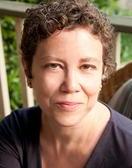
Frank and Medina
(Note: Today I’m pleased to share this space with guest blogger Frank Fredericks.)
I recently read Susan Katz Miller’s Being Both, which is a practical, story-based guide on the many options interfaith couples have, with a particular focus on the feasibility of raising children in more than one faith tradition.
Being in an interfaith marriage of my own as a Millennial, I was fascinated by the different approaches offered, but at times felt like the discourse within its pages was for Gen X’ers, who are now raising children, whether toddlers or teens, and Boomers, the generation before them. The challenges presented to them as interfaith couples include communal acceptance, birth and coming of age rituals, and ultimately identity in adulthood. I believe Millennials will be facing slightly different challenges.
While reading, I reflected on my own marriage with Medina, who is a Muslim of Afghan and Mexican descent, and grew up in an interfaith household. We are Millennials, both practicing in our respective faith traditions, but not particularly tied to specific congregations. We believe, but our community of social interaction is wider than our religious community. We both strongly identify with our religious communities, I as an evangelical Christian and Medina as a Muslim, but we are both extremely wary of institutions who claim to represent us. We’re thus taking stock of what we want to give to our children when we begin, and what we’ll leave behind.
Reflecting on our own childhoods, I attended church, Christian schools, and even played guitar on worship team for both, while Medina attended mosque with her mother, and went to Islamic school after the regular school-day. We both grew up fairly entrenched in our own traditions, but as adults no longer seek congregational life to experience the fruits of our religious traditions.
And it appears that Medina and I are representative of a larger trend of Millennials and religious practice. While the headlines often highlight the trend towards the growing non-religious identity among Millennials, there’s something else that’s equally telling: While two-thirds of Millennials identify with a religious tradition, only 22% of millennials actually attend weekly religious services. In other words, the majority of Millennials religiously identify but do not belong to or regularly attend services with a congregation. This has been referred to as the “unchurched” or the “unmosqued” movements, with a similar parallel for young Jews as well (granted, with a completely different construct for religious identity).
As a result, we’re not troubled by the same things Gen X interfaith and Boomer interfaith couples are. We really don’t care at all about congregational acceptance. And like many people outside mainline Protestant, Catholic, and Jewish congregations, birth and coming of age rituals are simply not a part of our religious traditions. Granted, some of this is denominational, but as interfaith relationships become more widespread, Millennials in interfaith couples will be much more likely to come from communities beyond Jews, Catholics and mainline Protestants, including my own evangelical tradition, which although the largest religious group in America, has historically been more insular.
But one can argue, all this non-institutional Millennial hogwash might simply be a phase. Perhaps we too as a generation will return to the pews and prayer rugs when our firstborns shock us with the life-changing initiation to parenthood. Interestingly, the research hints that some of us may never do so. In American Grace, by Robert Putnam and Joseph Campbell, they outline how not only are Millennials attending weekly religious services less than those belonging to older generations, but they are also attending at a lower rate than those generations did at the same age. Essentially, this means that though one’s likelihood to attend a house of worship increases as you get older, each subsequent generation is attending less frequently, even when adjusted for age. The big question is how close to the pattern Millennials will stay, once they become parents.
Even if Millennials in interfaith relationships stay out of congregations even after entering parenthood, we still face plenty of challenges. Like the generations before us, we must grapple with identity, family acceptance, and family tradition. In fact, in the absence of congregational liturgy, the challenge of feeling “authentic” in individual worship, balanced with shared family ritual, may be even more difficult to navigate.
So when Medina and I have our first child, we may not be able to take wholesale all of the wisdom from the interfaith generations before us. But we can learn from how they created new religious responses to a changing landscape, to forge the religious practices of the 21st Century. I’m sure more of Being Both will become relevant as those of us in my generation become parents. And I pray that our children will find our innovations on religious life applicable for them, when they too face a changing religious landscape, just as we learned from the generations before us.
Frank Fredericks is the founder of World Faith, a global interfaith development organization, and Mean Communications, a digital strategy firm. He’s the shockingly fortunate spouse of the wildly intelligent and beautiful Medina Fredericks. He tweets at @frankiefreds.
About these ads
